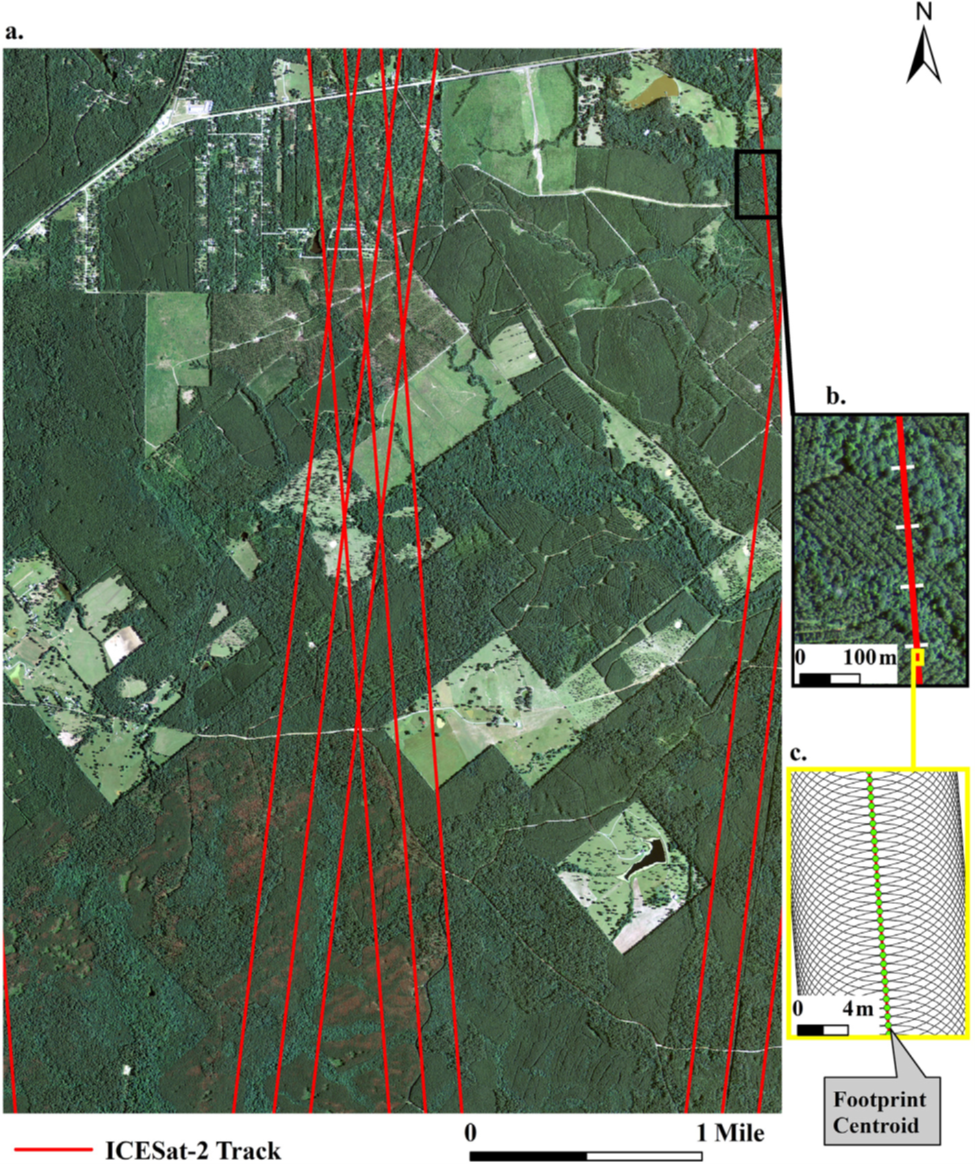Estimating aboveground biomass and forest canopy cover with simulated ICESat-2 data

Introduction:
The Ice, Cloud and Land Elevation Satellite-2 (ICESat-2) launched on September 15th, 2018 and this mission offers an extraordinary opportunity to contribute to an assessment of forest resources at multiple spatial scales. This study served to develop a methodology for utilizing ICESat-2 data over vegetated areas.
Goal: The specific objectives were to: (1) derive a simulated ICESat-2 photon-counting lidar (PCL) vegetation product using airborne lidar data,
(2) examine the use of simulated PCL metrics for modelling aboveground biomass (AGB) along ICESat-2 profiles using a simulated ICESat-2 PCL vegetation product and reference AGB estimated from airborne lidar data, and
(3) estimate forest canopy cover using simulated PCL canopy product data and airborne lidarderived canopy cover.
Where and scenarios: Using existing airborne lidar data for Sam Houston National Forest (SHNF) in Texas and known ICESat-2 track locations, PCL simulations were carried out. Three scenarios were analyzed in this study;
-
simulated data without the addition of noise,
-
processed simulated data for daytime, and
-
nighttime scenarios.
Highlights:
product Segments measuring 100m along the proposed ICESat-2 tracks were used to extract simulated PCL metrics from each of the three data scenarios and spatially coincident, reference airborne lidar-estimated AGB and airborne lidar canopy cover estimates.
Linear regression models were then developed with a subset of the simulated PCL segments to estimate AGB and canopy cover and their performance assessed using separate testing sets.
Three scenarios: AGB model testing with the simulated dataset without noise, nighttime and daytime scenarios resulted in R2 values of 0.79, 0.79 and 0.63 respectively, with root mean square error (RMSE) values of 19.16 Mg/ha, 19.23 Mg/ha, and 25.35 Mg/ha. Predictive models for canopy cover (4.6 m) achieved R2 values of 0.93, 0.75 and 0.63 and RMSE values of 6.36%, 12.33% and 15.01% for the simulated dataset without noise, nighttime and daytime scenarios respectively.
Findings from this study suggest the potential of ICESat-2 for estimating AGB, given the photon detection rate and background noise anticipated by ICESat-2 under temperate forest settings, and especially in the data format provided by standard ICESat-2 data vegetation products.